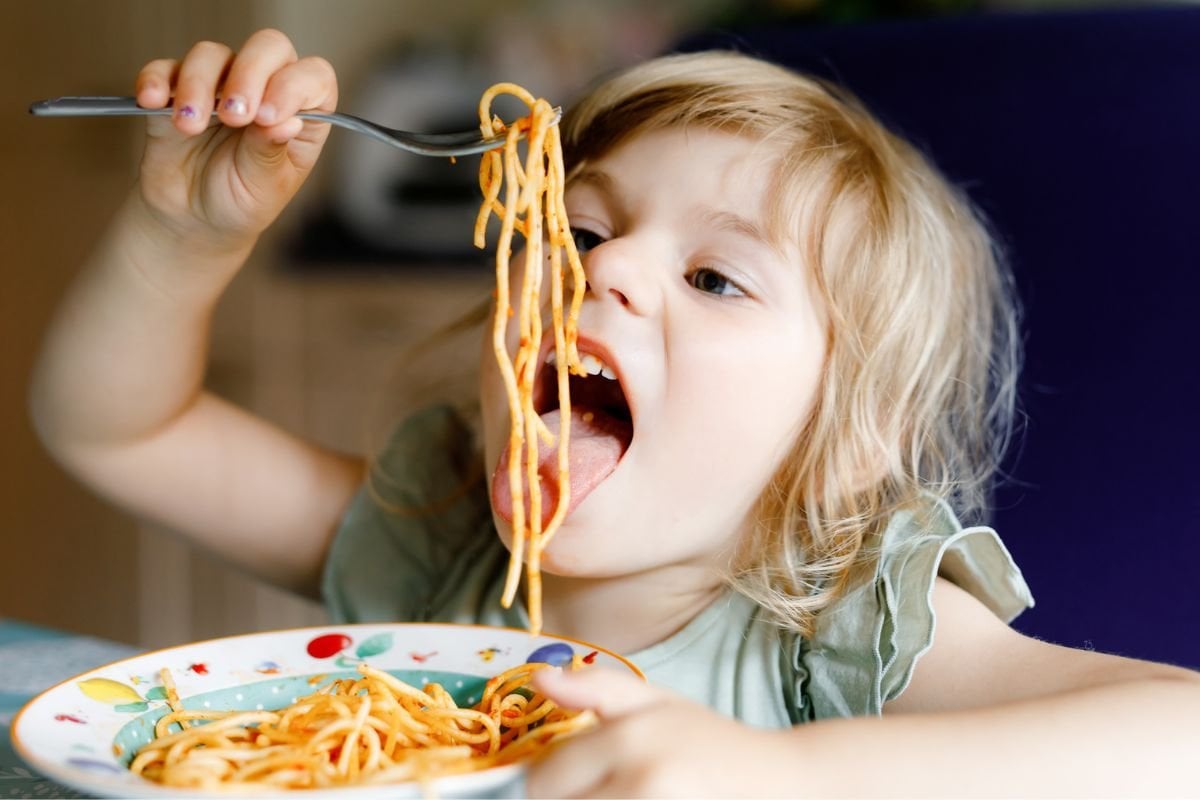
I may have gone to university to become a nutritionist, but that doesn’t mean that I don’t get heckled by my five-year-old twin daughters and eight-year-old son about what they are eating for dinner sometimes. Occasionally the struggle is real when it comes to mealtimes with the kids.
It certainly looks like the struggle is real for most households, because 92 per cent of kids are not eating the minimum requirement of fruits and vegetables according to the Australian Bureau of Statistics for 2020-21.
I think as parents, except for perhaps a couple of smug mums and dads with only one unicorn child, we are aware of how challenging it can be to make sure our kids are eating right and getting the nutrients they need.
Watch: How to make 21 meals for $70. Post continues.
Some nutritionists say 'don’t disguise or hide healthy foods', but when I look at the statistics on how many children are actually getting enough fruit and vegetables I tend to disagree. My line of thinking is to get creative on how to cram as many nutrient-dense foods into their bellies as possible.
When it comes to food, I tend to focus on gut health and healthy fats to get the most bang for my buck.
Parents have never been busier or had higher expectations put on them by themselves and society, so here is a list of no-nonsense ways to boost nutrient intake in your kids.




























































































